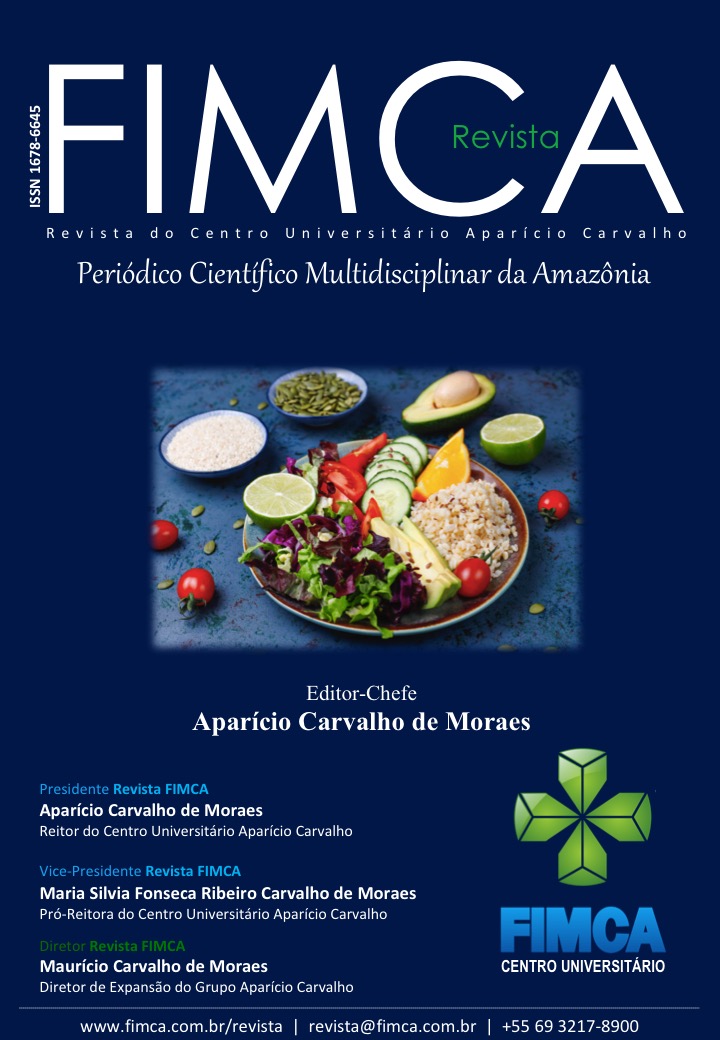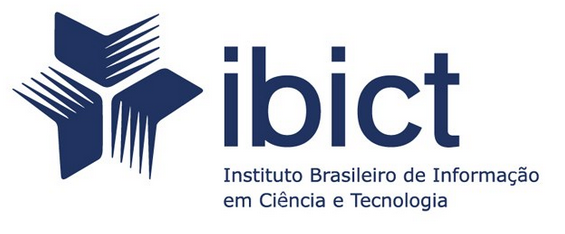REVISÃO DA DETECÇÃO, CLASSIFICAÇÃO E TRATAMENTO DAS ARRITMIAS CARDÍACAS
REVIEW OF THE DETECTION, CLASSIFICATION AND TREATMENT OF HEART ARRHYTHMIAS
DOI:
https://doi.org/10.37157/fimca.v7i2.120Palavras-chave:
Arritimias cardíacas, Diagnóstico, Tratamento, Classificação, Marca-passoResumo
As arritmias cardíacas são irregularidades nos ritmos cardíacos e/ou perturbações na ativação ou batimento normal do miocárdio, em alguns casos, resulta em doenças cardíacas, o que representa sérias ameaças à vida humana. A patologia é caracterizada por ritmo irregular de batimento cardíaco, que pode ser mais acelerado (taquicardia) ou mais lento do que o normal (bradicardia), podendo ocorrer em qualquer idade. A sintomatologia decorrente desta patologia consiste em cansaço, tontura, desmaios, indisposição, e em casos mais graves a morte. O presente estudo consiste em um levantamento bibliográfico de literatura a respeito das arritmias cardíacas, abrangendo suas formas de diagnóstico e tratamento. O diagnóstico das arritmias consiste nas análises dos sintomas e a realização de testes de monitoramento cardíaco específico para arritmias, incluindo eletrocardiograma, monitor de holter, monitor de eventos externo, ecocardiografia e gravador de loop implantável. Após a confirmação do diagnóstico, encaminha-se para o tratamento, sendo este específico para cada tipo de arritmia, de acordo com as necessidades do paciente.
Cardiac arrhythmias are irregularities in cardiac rhythms and / or disturbances in the normal activation or beat of the myocardium, in some cases, resulting in heart disease, which represents serious threats to human life. The pathology is characterized by an irregular heartbeat rhythm, which can be faster (tachycardia) or slower than normal (brachycardia), and can occur at any age. The symptoms resulting from this pathology consist of tiredness, dizziness, fainting, indisposition, and in more severe cases, death. The present study consists of a bibliographic survey of the literature on cardiac arrhythmias, covering their forms of diagnosis and treatment. The diagnosis of arrhythmias consists of the analysis of symptoms and the performance of cardiac monitoring tests specific for arrhythmias, including electrocardiogram, holter monitor, external event monitor, echocardiography and implantable loop recorder. After confirming the diagnosis, the patient is referred for treatment, which is specific to each type of arrhythmia, according to the patient's needs.
Referências
AKHTAR, M.; JAZAYERI, M. R.; SRA, J.; BLANCK, Z.; DESHPANDE, S.; DHALA, A. Atrioventricular nodal reentry. Clinical, electrophysiological, and therapeutic considerations. Circulation, v.88, p.282–295, 1993.
ALSAIED, T.; BASKAR, S.; FARES, M.; ALAHDAB, F.; CZOSEK, R.J.; MURAD, M.H.; PROKOP, L.J.; DIVANOVIC, A.A. First-Line Antiarrhythmic Transplacental Treatment for Fetal Tachyarrhythmia: A Systematic Review and Meta-Analysis. J Am Heart Assoc., v. 6, p.1-9, 2017.
AMARA, W et al. SETAM Investigators. Early Detection and Treatment of Atrial Arrhythmias Alleviates the Arrhythmic Burden in Paced Patients: The SETAM Study. Pacing Clin Electrophysiol., v. 40, p. 527-536, 2017.
BALLI, S.; KUCUK, M.; ORHAN BULUT, M.; KEMAL YUCEL, I.; CELEBI, A. Transcatheter Cryoablation Procedures without Fluoroscopy in Pediatric Patients with Atrioventricular Nodal Reentrant Tachycardia: A Single-Center Experience. Acta Cardiol Sin., v 34, p.337-343, 2018.
BARDY, G. H.; PACKER, D. L.; GERMAN, L. D.; GALLAGHER, J. J. Preexcited reciprocating tachycardia in patients with Wolff-Parkinson-White syndrome: incidence and mechanisms. Circulation, v. 70, p.377–391, 1984.
BENJAMIN, E.J.; WOLF, P.A.; D’AGOSTINO, R.B.; SILBERSHATZ, H.; KANNEL, W.B.; LEVY, D. Impact of atrial fibrillation on the risk of death: the Framingham Heart Study. Circulation, v.98, p.946- 952, 1998.
BRUGADA, P.; BA¨ R, F.W.; VANAGT, E.J.; FRIEDMAN, P.L.; HEIN, J.J.Observations in patients showing AV junctional echoes with a shorter PR than RP interval: distinction between intranodal reentry or reentry using an accessory pathway with a long conduction time. Am J Cardiol, v. 48, p. 611–622, 1981.
BUN, S.S.; LATCU, D.G.; MARCHLINSKI, F.; SAOUDI, N. Atrial flutter: more than just one of a kind. Eur Heart J, v.36, p.2356–2363, 2015.
CHIU, S. N.; WANG, J. K.; WU, M. H.; CHANG, C. W.; CHEN, C. A.; LIN, M. T.; WU, E. T.; HUA, Y. C.; LUE, H. C.; TAIPEI PEDIATRIC CARDIOLOGY WORKING GROUP. Cardiac conduction disturbance detected in a pediatric population. J Pediatr., v.152, p.85-89, 2008.
COHEN MI, TRIEDMAN JK, CANNON BC, DAVIS AM, DRAGO F, JANOUSEK J, KLEIN GJ, LAW IH, MORADY FJ, PAUL T, PERRY JC, SANATANI S, TANEL RE. PACES/HRS expert consensus statement on the management of the asymptomatic young patient with a Wolff-Parkinson-White (WPW, ventricular preexcitation) electrocardiographic pattern: developed in partnership between the Pediatric and Congenital Electrophysiology Society (PACES) and the Heart Rhythm Society (HRS). Endorsed by the governing bodies of PACES, HRS, the American College of Cardiology Foundation (ACCF), the American Heart Association (AHA), the American Academy of Pediatrics (AAP), and the Canadian Heart Rhythm Society (CHRS). Heart Rhythm, 2012.
CRUZ, F. E. S.; CHERIEX, E. C.; SMEETS, J. L. R. M.; ATIÉ, J.; PERES, A. K.; PENN, O. C. K. M.; WELLENS, H. J. J.Reversibility of tachycardia-induced cardiomyopathy after cure of incessant supraventricular tachycardia. J Am Coll Cardiol, v.16, p.739–44, 1990.?
FU, D.G. Cardiac Arrhythmias: Diagnosis, Symptoms, and Treatments. Cell Biochem Biophys, v.73, p.291-296, 2015.
GANZ, L.I.; FRIEDMAN, P.L. Supraventricular tachycardia. N Engl J Med, v.332, p.162–73, 1995.
GRANADA, J. et al. Incidence and predictors of atrial flutter in the general population. J Am Coll Cardiol, v.36, p.2242– 2246, 2000.
GUYTON, A.C.; HALL, J E. Textbook of Medical Physiology. 12th ed. Philadelphia: W. B. Saunders; 2011.
HAINES, D.E.; DIMARCO, J.P. Sustained intraatrial reentrant tachycardia: clinical, electrocardiographic and electrophysiologic characteristics and long-term follow-up. J Am Coll Cardiol, v. 15, p.1345–1354, 1990.
HART RG, BENAVENTE O, MCBRIDE R, PEARCE LA. Antithrombotic therapy to prevent stroke in patients with atrial fibrillation: a meta-analysis. Ann Intern Med., v.131, p.492-501, 1999.
HEALEY, J. S. et al. Subclinical atrial fibrillation and the risk of stroke. N Engl J Med., v.366, p.120-9, 2012.
HOOK, B. G.; MARCHLINSKI, F. E. Value of ventricular electrogram recordings in the diagnosis of arrhythmias precipitating electrical device shock therapy. Journal of the American College of Cardiology, v. 17, p. 978–984,1991.
JOSEPHSON, ME. Clinical cardiac electrophysiology: techniques and interpretations. Lippincott Williams & Wilkins; 2008.
KANNEL, W.B.; BENJAMIN, E.J. Current perceptions of the epidemiology of atrial fibrillation. Cardiol Clin., v.27, p.13-24, 2009.
KARMEGERAJ, B.; NAMDEO, S.; SUDHAKAR, A.; KRISHNAN, V.; KUNJUKUTTY, R.; VAIDYANATHAN, B. Clinical presentation, management, and postnatal outcomes of fetal tachyarrhythmias: A 10-year single-center experience. Ann Pediatr Cardiol., v. 11, p. 34-39, 2018.
KASTOR, J.A. Multifocal atrial tachycardia. N Engl J Med, v. 322, p. 1713–7,1990.
KNIGHT, B. P. Patient information: Wolff-Parkinson-White syndrome. Retrieved March 11, 2007.
KUMAR, S. U.; INBARANI, H. H. Neighborhood rough set based ECG signal classification for diagnosis of cardiac diseases. Soft Computing, v. 21, n.16, p. 4721–4733, 2017.
LUNDQVIST, C.B., POTPARA, T.S., MALMBORG, H. Supraventricular Arrhythmias in Patients with Adult Congenital Heart Disease. Arrhythm Electrophysiol, 6, 42-49, 2017.
MARROUCHE, N. F., DRESING, T., COLE, C., BASH, D., SAAD, E., BALABAN, K., PAVIA, S. V., SCHWEIKERT, R., SALIBA, W., ABDUL-KARIM, A., PISANO, E., FANELLI, R., TCHOU, P., NATALE, A. A circular mapping and ablation of the pulmonary vein for treatment of atrial fibrillation: Impact of different catheter technologies. Journal of the American College of Cardiology, 40, 464–474, 2002.
MASSARI, F., SCICCHITANO,P., POTENZA, A., SASSARA, M., SANASI, M., LICCESE, M., CICCONE, M.M., CALDAROLA, P. Supraventricular tachycardia, pregnancy, and water: A new insight in lifesaving treatment of rhythm disorders. Ann Noninvasive Electrocardiol, 2018.
MIRZOYEV, S., MCLEOD, C.J., ASIRVATHAM, S.J. Embryology of the conduction system for the electrophysiologist. Indian Pacing Electrophysiol J, 2010.
MURAKOSHI, N; AONUMA, K. MURAKOSHI N et al. Circulation Journal Vol.77, October 2013
OZBAY, Y.; KARLIK, B. A Recognition of ECG Arrhythmias Using Artificial Neural Networks. Electrical and electronics engineering, 2001.
PAGE RL, WILKINSON WE, CLAIR WK, MCCARTHY EA, PRITCHETT EL. Asymptomatic arrhythmias in patients with symptomatic paroxysmal atrial fibrillation and paroxysmal supraventricular tachycardia. Circulation, 1994.
PERNA, F.; LEO, M. Epidemiology, Classification and Description of Cardiac Arrhythmias. Sports Cardiology, Springer, p. 155-177, 2012.
REYNOLDS, M.R, LAVELLE, T., ESSEBAG, V., COHEN, D.J., ZIMETBAUM, P. Influence of age, sex, and atrial fibrillation recurrence on quality of life outcomes in a population of patients with new-onset atrial fibrillation: the Fibrillation Registry Assessing Costs, Therapies, Adverse events and Lifestyle (FRACTAL) study. Am Heart J., 2006.
ROSEN, M. R., FISCH, C., HOFFMAN, B. F., DANILO, P., JR, LOVELACE, D. E., KNOEBEL, S. B. Can accelerated atrioventricular junctional escape rhythms be explained by delayed afterdepolarizations? Am J Cardiol, 1980.
SAOUDI, N., COSÍO, F., WALDO, A., CHEN, S.A., IESAKA, Y., LESH, M., SAKSENA, S., SALERNO, J., SCHOELS, W. Working Group of Arrhythmias of the European of Cardiology and the North American Society of Pacing and Electrophysiology. Eur Heart J, 2001.
STABILE, G., GALLO, P., LA ROCCA, V., D'AGOSTINO, C., IULIANO, A., AGRESTA, A., GUARINI, P., GRIMALDI, M., LIBRERA, M. T., CIARDIELLO, C., MALACRIDA, M., DE SIMONE, A. Inducibility of ventricular arrhythmia and tachyarrhythmia recurrences in patients with implantable defibrillator. Hellenic J Cardiol., 2015.
WOLFF, L., PARKINSON, J., WHITE, P.D. Bundle-branch block with short P-R interval in healthy young people prone to paroxysmal tachycardia. 1930. Ann Noninvasive Electrocardiol., 2006.
WU, D., AMAT-Y-LEON, F., DENES, P.Demonstration of sustained sinus and atrial re-entry as a mechanism of paroxysmal supraventricular tachycardia. Circulation, 1975.
YAMADA, T., MCELDERRY, H. T., OKADA, T., MURAKAMI, Y., DOPPALAPUDI, H., YOSHIDA, N., ALLRED, J. D., MUROHARA, T., KAY, G. N.Idiopathic focal ventricular arrhythmias originating from the anterior papillary muscle in the left ventricle. J. Cardiovasc. Electrophysiol, 2009.
YEALY, D.M., KOSOWSKY, J.M. Chapter 79: Dysrhythmia. Marx JA, Hockberger RS, Walls RM, et al; Rosen’s Emergency Medicine Concepts and Clinical Practice. 8th ed. Philadelphia, PA: Saunders/ Elsevier. 2014.
ZHANG, Z., DONG, J., LUO, X., CHOI, K.-S., WU, X. Heartbeat classification using disease-specific feature selection. Computers in Biology and Medicine, 2014.
ZUO, W. M. Diagnosis of cardiac arrhythmia using kernel difference weighted KNN classifier. Proceedings of the Computers in Cardiology, v. 35, p. 253–256, 2008.
Publicado
Como Citar
Edição
Seção
A Revista FIMCA disponibiliza seus artigos e resumos para livre acesso de forma permanente e gratuita nos termos da Creative Commons Attribution License, permitindo que a sociedade possa compartilhar (copiar e redistribuir o material em qualquer suporte ou formato para qualquer fim, mesmo que comercial) e adaptar (remixar, transformar, e criar a partir do material para qualquer fim, mesmo que comercial), desde que seja dado o devido crédito apropriado, provendo um link para a licença e indicar se mudanças foram feitas.
Vale a pena ressaltar, que mesmo que o material seja transformado, modificado, ou der origem a outro material, este deve ser distribuido respeitando obrigatoriamente a citação do original nos termos da licença CC BY-AS 4.0 DEED.

















